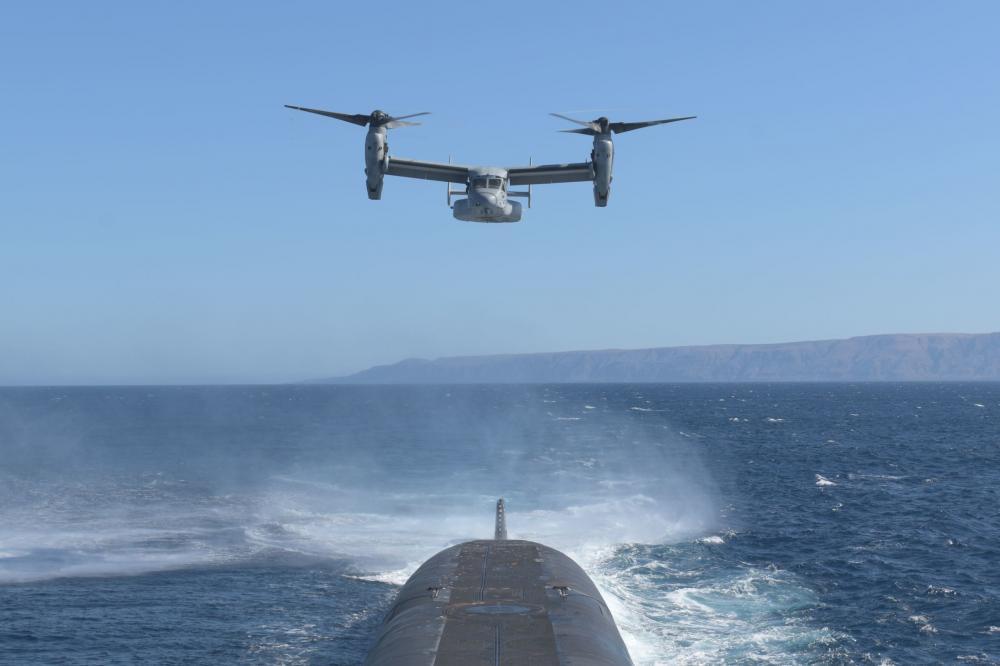Two Ohio-class ballistic missile submarines demonstrated their ability to replenish while operating at sea during a series of vertical replenishment (VERTREP) exercises off the coast of California July through August, 2022. Each displacing 18,750 tons submerged, the Ohio-class boats are the largest submarines ever built for the U.S. Navy. During the exercise, the Ohio-class ballistic missile submarines USS Nevada (SSBN 733) and USS Henry M. Jackson (SSBN 730) operated jointly with U.S. Navy MH-60R Seahawk helicopters, U.S. Marine Corps CMV-22 Ospreys, and U.S. Air Force C-17 Globemaster IIIs. The event showcased the submarines’ ability to remain on mission and at sea while performing essential replenishment operations.
“Our fundamental mission is to deter a strategic attack, which is an existential threat to the United States and our allies, Testing our readiness ensures we maintain a safe, secure and reliable strategic deterrent force” said Rear Adm. Mark Behning, commander of both Submarine Group 9 and Task Group 114.3.
“Recently the Pacific SSBN submarine force exercised a vertical replenishment capability for at-sea SSBNs to prove our resiliency for worldwide operations and to replenish our ships with materials, food and operational gear,” said Capt. Kelly L. Laing, director of maritime operations for Commander, Task Group 114.3.

The event was part of a U.S. Strategic Command exercise which highlights the interoperability of multiple U.S. military platforms in order to implement the strategic deterrence mission. This event is the latest in a series of efforts by the United States submarine force to look at alternative operations that previously required a submarine to be pierside to accomplish. For example, in May, the Ohio-class ballistic missile submarine USS Alabama (SSBN 731) conducted an at-sea crew exchange, swapping out the blue and gold crews. This demonstrated the submarine’s ability to continuously operate and stay on mission for longer periods of time while sustaining quality of life for the crews and their families.
Nevada and Henry M. Jackson are two of eight Ohio-class ballistic missile submarines homeported at Naval Base Kitsap-Bangor. The Ohio-class ballistic missile platform provides the United States with its most survivable leg of its strategic deterrent forces. The Ohio class of nuclear-powered submarines are the world’s third-largest submarines, behind the Russian Navy’s Soviet-designed 48,000-ton Typhoon class and 24,000-ton Borei class. The Ohios carry more missiles than either: 24 Trident II missiles apiece, versus 16 by the Borei class (20 by the Borei II) and 20 by the Typhoon class. The Ohio class is to be gradually replaced by the Columbia class beginning in 2031.












